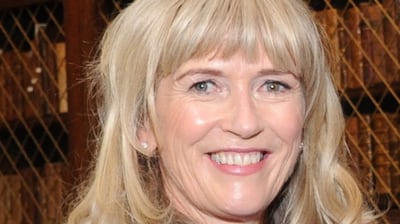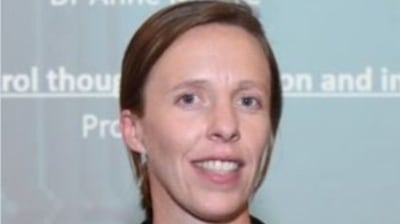Infectious disease consultants are experts in viral and bacterial diseases and are – with all other healthcare professionals – the ones whose work has gone into overdrive since the outbreak of Covid-19 in Ireland.
So, it's not surprising that Prof Mary Horgan, consultant physician in infectious diseases and president of the Royal College of Physicians of Ireland has returned to the front line to work with her colleagues at Cork University Hospital (CUH).
“It’s important to be a role model. I trained during the Aids epidemic. The difference with Covid-19 is that everyone is at risk, from doctors in the front line to postmen to my 88-year-old mother. Covid-19 will be around until we find a treatment and vaccine for it,” she says.
She explains how hospitals are now divided into two pathways – a Covid-19 pathway where those suspected as having it are treated as it they have it and a non-Covid-19 pathway where patients with chest pain, high blood sugar and other conditions are treated. Medical and nursing teams are designated to look after the Covid or non-Covid patients only to prevent cross transmission of infection.

Like her colleagues in general practice, Prof Horgan is aware that there are patients without Covid-19 symptoms currently not attending hospitals who need medical care. “Some patients with cellulitis, new-onset anaemia, asthmatic attacks and chest pain are not coming to hospitals and we are aware that there will be a big onslaught of patients requiring care once the surge of cases from Covid-19 falls off,” she says.
Dr Corinna Sadlier, also an infectious disease specialist at CUH says the patients with Covid-19 who are now admitted to hospital mostly have viral pneumonia. "The inflammation on their lungs shows up on a chest X-ray and while some [hospital] patients with Covid-19 have underlying respiratory conditions, 50 per cent of our patients are under 60 and otherwise healthy," says Dr Sadlier.
The sickest patients are the ones who need to be on ventilators in intensive care units (ICUs). Essentially, ventilators are machines that take over the function of the lungs when they fail because of infection. Being on a ventilator gives the patient’s lungs a chance to clear the infection and get the lungs back working again.
“We had two [Covid-19] patients in their 70s on ventilators for two weeks. It will take these patients two to four weeks to be able to walk and feed themselves again afterwards. Younger patients will be able to recover more quickly after being on a ventilator,” Dr Sadlier says.
In the ICU, patients are looked after by specialists in intensive care, lung specialists, clinical nurse specialists and physiotherapists who monitor patients very closely during this time. Sometimes patients need to lie front facing so that the flow of oxygen can reach as much of the lungs as possible. Patients are feed by tubes to ensure that good nutrition is maintained and this helps their recovery when they get off the ventilator.
Doctors also use non-invasive ventilation methods [using a mask over the mouth or up the nostrils] to assist people’s breathing in less severe cases. Most patients who are admitted to hospital fall in to this category.
Dr Sadlier says that patients are understandable very frightened when they get a Covid-19 diagnosis. Patients are kept in isolation rooms until their diagnosis is confirmed. Then the Covid-19 positive patients are kept in shared rooms with four to six patients.
“There is no proven treatment for Covid-19 infection, so we essentially have to wait for the body to fight the infection itself. Many patients are very worried when they are diagnosed with Covid-19; some ask us if they are going to die. Thankfully we can reassure most people,” says Dr Sadlier. At the end of March, almost a third of patients admitted to CUH with Covid-19 had been discharged home.
No-visitor policy
Dr Sadlier says that the no-visitor policy in hospitals has been difficult for patients and families. “It’s an upsetting time for patients and their families. We have to have difficult conversations with family members over the phone. We call families every day with updates.”
The no-visitor rule is lifted for patients who are dying at CUH to allow one family member to visit at a time. “We need to balance compassion with risk but each visitor [to a dying patient] will wear a mask, gloves and an apron,” she says. It’s important, she adds, for patients to consider advanced care directives, which includes whether a patient wants to be resuscitated or not if they have organ failure. “With or without Covid-19, these are discussions people should have. We have these discussions with patients coming in the door,” she says.

According to Dr Sadlier, there is also a high level of anxiety when patients are discharged. “They are worried that their families will get sick and many are not sure how they got the illness in the first place.” Patients discharged from hospital must self-isolate for two weeks in total from when they got their test or for five days after the last day they had a fever.
Staff morale in the hospital is good, Dr Sadlier says. “No one is saying: ‘I don’t want to work on the Covid-19 ward.’ We have been in training since January. We had an early surge at Cork University Hospital but [at the end of March] we aren’t seeing as many cases as the Dublin hospitals are.”
Prof Horgan adds that there has been a huge team effort across the country which is reflected in how the Health Service Executive has managed this crisis. “Everyone supports each other, from the doctors and nurses to the laboratory and administration staff to the porters. We are all in this together,” she says. She compliments the Taoiseach and Minister for Health for following the advice of the experts. “They came and listened and took hard decisions.”





















